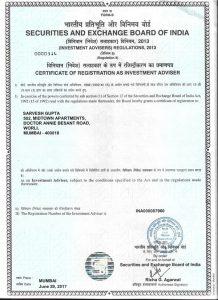Consistency of performance in equity investment management is as we all know, dependent on retention of great managers which is presumably higher in PMS/RIA/AIFs.
I must add, however, that returns going forward are even more importantly dependent on the overall assets under management. The law of gravity in the world of investment management is that the everything else remaining the same (ceteris paribus as economists will say  ), expected returns are inversely proportional to size of the assets. An elephant, however good, can never run faster than even a limping fox. Infact Buffett has been famously quoted as saying that “Give me USD 1 Million to invest and I guarantee you that I will generate 50% on that”. What he really meant is that higher size of assets has greatly put a celing on his performance. Infact Berkshire’s performance, while remaining the best on an overall basis has come down drastically in recent decades as the size of assets increase.
), expected returns are inversely proportional to size of the assets. An elephant, however good, can never run faster than even a limping fox. Infact Buffett has been famously quoted as saying that “Give me USD 1 Million to invest and I guarantee you that I will generate 50% on that”. What he really meant is that higher size of assets has greatly put a celing on his performance. Infact Berkshire’s performance, while remaining the best on an overall basis has come down drastically in recent decades as the size of assets increase.
So people planning to invest in Advisory services/PMS/AIF should carefully think about the size of assets under management and its recent growth. This is the reason some of the world’s best investment houses have been closed for new money for several years now. Seth Klarman’s Baupost, Janchor Partners based out of HK as well as Medallion fund – all performing at top levels are closed for new investors. I think even DSP did stop taking money in one of their funds from new investors – a good step (although they still allowed existing investors to put more money – a bad step).
So watchout for asset accumalation in bull markets, the problem is that when bear markets come and everyone is interested in only one task which is selling, funds which have too much money in terms of their size (have great caution wherever firm’s size of assets is over 1000 cr) but are invested primarily in small and mid caps are going to be massively hit. Keeping aside the point of almost ridiculous valuations in the small & mid cap stories which most of them own – trading frequently at 50 times or more of their one year forward earnings, their own actions of selling will cause prices to depress rapidly and even hit consistent lower circuits. When it comes to selling in bear markets, liquidity is like oxygen, when you have it (like today when markets are bullish) nobody feels the importance of it, but when you don’t have it (which is what is going to happen in many of these expensive small & mid caps in bear markets)- the only thing which matters is oxygen i.e. liquidity. So funds which have quickly scaled up asset bases (anything more than 1000 crore is big) while still focusing on small & mid caps focused strategy will find liquidity a major challenge in bear markets and can see severe drawdowns (fall from peak as % of peak value). Even 40% or more can be routine for many is my guess given the extent of over-valuations in most of the expensive small and mid caps.
So please be aware of this fact as well, success in investment management, if not managed well during bull markets (by considerably slowing down incoming investors or evolving investment strategy to take into account liquidity in bear markets), can become the biggest curse for a successful investment manager. Hope I was able to clear this point to many of the existing and potential PMS/AIF/Small cap-midcap focused MFs clients.
PS – A corollary to above observation is funds which have invested in some of market’s well known or well discovered stories. These investments will have wide institutional-HNI ownership and will be under a bigger trouble in a bear market than those portfolios which are distinctly different from many others. This is also the reason contrarian low valuations focused strategies outperform growth strategies overall in the long term as in a bear market, value outperforms growth by a huge margin much more than what growth outperforms value in bull market.

